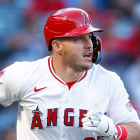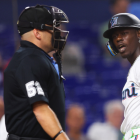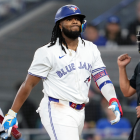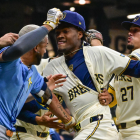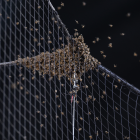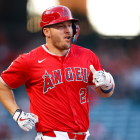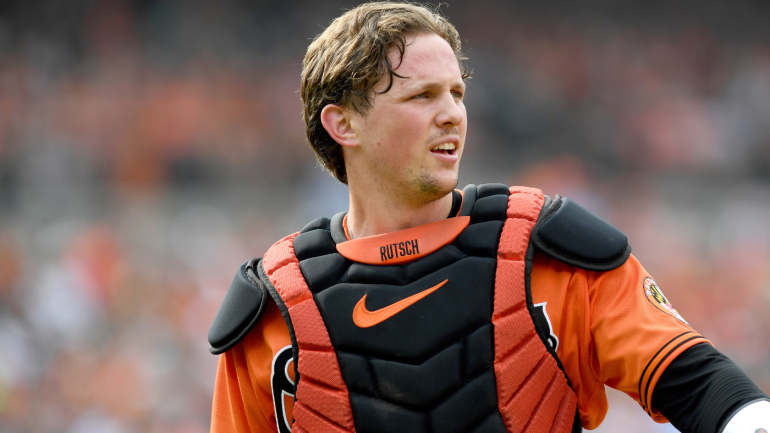
Major League Baseball's 2023 amateur draft will kick off on Sunday, July 9, or, as has become customary in recent years, with the onset of the All-Star Break. The Pittsburgh Pirates will make the No. 1 selection for the sixth time in franchise history. They've previously chosen Henry Davis (2021), Gerrit Cole (2011), Bryan Bullington (2002), Kris Benson (1996), and Jeff King (1986).
Who will join that group? CBS Sports recently ranked LSU outfielder Dylan Crews as the top player available in the class, but that doesn't mean the Pirates will go that route. They could follow the same playbook that led them to Davis in 2021: selecting the top player with the lowest signing bonus demand, then redirecting those savings to improve their talent outlay later in the class.
For our purposes here, we're less interested in who the Pirates will take and more interested in whether or not that player will end up being worth the selection. Historically, 91% of No. 1 picks have reached the majors. Those players have then averaged 21.8 Wins Above Replacement. For comparison, here are those metrics for the rest of the top five, per Baseball Reference:
| Pick No. | MLB% | Average WAR |
|---|---|---|
1 | 91% | 21.8 |
2 | 86% | 14.9 |
3 | 82% | 13.5 |
4 | 81% | 12.7 |
5 | 65% | 11.5 |
With that in mind, let's use this opportunity to see how the 10 most recent No. 1 picks have panned out. Do note the picks are presented chronologically.
2013: Mark Appel, RHP, Astros
Appel was the second of three consecutive No. 1 picks made by the Astros. (They had previously landed Carlos Correa, and in a year's time they would select Brady Aiken.) The Astros would bail on Appel relatively early in his career, trading him after the 2015 season in a massive deal for Phillies closer Ken Giles. Appel then retired prior to the 2018 campaign, only to return to the game a few years later. He made his big-league debut last season, but the Phillies released him this March and he's yet to sign with another club. Kris Bryant and Jon Gray were the most notable players selected right after Appel. Aaron Judge was also part of this class, lasting all the way until the 32nd pick.
2014: Brady Aiken, LHP, Astros
Aiken became the third high-school pitcher selected No. 1, and the first since the Yankees took Brien Taylor in 1991. Unfortunately, Aiken joined Taylor in another respect as the most recent No. 1 picks to not reach the majors. Aiken also didn't sign with the Astros after they revised their offer because of concerns about his ulnar collateral ligament. It was a whole mess that resulted in the MLB Players Association filing a grievance against the Astros after they failed to uphold an agreed-upon deal with fifth-round pick Jacob Nix. The Astros would take Alex Bregman with the compensatory pick they received in the following year's draft (No. 2 overall). Aiken was then selected 17th by Cleveland. He never pitched above A-ball and he was released in October 2021.
2015: Dansby Swanson, SS, Diamondbacks
Swanson experienced a whirlwind start to his career. The Diamondbacks selected him No. 1 in June then traded him to the Braves in December as part of a deal that fetched them Shelby Miller. (That one didn't work out so well.) Swanson would debut the following August. For a while, he appeared to be more of a solid player than a good one. Swanson has hit the proverbial thrusters in recent years, however, and his ascent convinced the Cubs to sign him to a long-term pact worth $177 million back in December.
2016: Mickey Moniak, OF, Phillies
Moniak was a defensible pick in a class that featured no obvious No. 1 selection. It just didn't work out for the Phillies -- or, frankly, for most of the teams picking early. Moniak was traded to the Angels last August, and so far this year he's provided them with slugging in a platoon role. This is the rare class where almost all the best players were selected outside of the first. To wit, consider that Bryan Reynolds and Pete Alonso were taken in the second; Sean Murphy and Zac Gallen in the third; and Corbin Burnes and Shane Bieber in the fourth.
2017: Royce Lewis, SS, Twins
Lewis was the first of three consecutive prep players selected to begin this draft, with the Reds taking right-hander Hunter Greene and the Padres opting for lefty MacKenzie Gore. Lewis' career has since been hampered by repeated injuries, including two separate tears of the ACL in his right knee. That's made it tough to determine if the Twins made the right call. Here's hoping Lewis -- plus Greene and Gore -- can stay healthy and make it a compelling topic. He's been excellent for the Twins on the field this season... but went down with an oblique injury recently that will sideline him for at least one month.
2018: Casey Mize, RHP, Tigers
Speaking of injury-prone No. 1 picks. Mize has been limited to 39 big-league appearances since his debut in August 2020, and none since last April because of back and Tommy John surgery. He resumed throwing in May with the hope that he would be able to return later this season. It's to be seen if that happens, or if he has another year wiped out. We'll note that at least the Tigers have gotten something from Mize. The A's selected Kyler Murray with the ninth pick and signed him to a contract, only to see him leave to play in the NFL. Oops.
2019: Adley Rutschman, C, Orioles
Rutschman became the first catcher selected No. 1 overall since Joe Mauer in 2001. That's appropriate, because Rutschman has quickly ascended to star status (and made his first All-Star Game this year), much the way Mauer did with the Twins. It's not often you get the chance to land a switch-hitting backstop with a well-rounded game. The Orioles are represented twice in this piece. Both times, they hit a home run.
2020: Spencer Torkelson, 1B, Tigers
Alas, the Tigers are also represented twice on this list, and it's heretofore unclear if they homered either time. Torkelson was a defensible pick at the time. He'd torn up the college scene and looked like a future cleanup hitter. That projection has yet to be fulfilled, though his underlying ball-tracking data suggests he should be more productive than he has been so far this season. At least Tigers fans can rest easy knowing that, with only a few exceptions, almost all of the other teams in the top 10 likely have some sense of remorse.
2021: Henry Davis, C, Pirates
The Pirates elected for Davis instead of Marcelo Mayer, Jack Leiter, or Jordan Lawlar as part of their portfolio approach. It's too soon to know if and by how much they'll regret that decision. Davis, for his part, is in the midst of a quality season, having recently been promoted to the majors. His power is his best tool.
2022: Jackson Holliday, SS, Orioles
As previously suggested, the Orioles have to be thrilled with taking Holliday last summer. He's overpowered minor-league pitching so far despite being just 19 years old. CBS Sports recently ranked Holliday as the sport's No. 1 prospect, noting that a "veteran talent evaluator said that Holliday is so far ahead of the pack that, if they could, they would trade their club's two best prospects (both well-regarded in their own right) for him."














